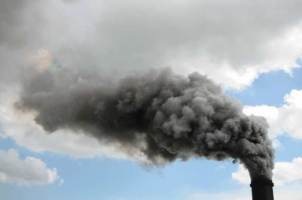
The connection between air pollution and cancer, as well as the link to numerous other illnesses and injuries including neurological disorders, respiratory problems, and other health issues, is strong. According to the Centers for Disease Control and Prevention (CDC):
1 in 12 people now have asthma, and most of those who suffer are female, African American children.
Recently released research linking race and income as risk factors for asthma has garnered fresh public debate about the intersection of these factors—air pollution, race, income levels, and asthma—and how they influence one another. The results have left scientists urging the public to recognize that while scientists may still be uncertain about what causes a person to have asthma, they may be certain that ozone increases the likelihood of an asthmatic attack in people who already have asthma.
Ozone Standards
A lot of the recent backlash is related to the Environmental Protection Agency (EPA) announcing that the 75 parts per billion (ppb) national air quality standard for ozone is no longer adequate to protect public health–a requirement mandated by the Clean Air Act. Specifically, a study published in March found that ambient ozone levels were directly associated with childhood asthma emergency room visits. Although researchers do not have an “absolute cutoff” when it comes to ozone levels (because each asthmatic reacts differently to different levels of exacerbation), they have very little doubt that ozone levels between 60 and 75 ppb can cause asthma attacks.
Public health advocates are demanding a tougher ozone standard because it would help people who suffer from asthma and other respiratory illnesses, citing ozone as one of the triggers for asthma, making people more susceptible to the other triggers. It is also of concern for children who play outside, as no amount of medication can filter out the ambient air that they breathe. Advocates are calling for a limit of 60 ppb.
EPA Recommendations
The EPA states that reducing ozone air pollution to between 65 and 70 ppb would prevent between 750 and 4,3000 premature deaths, between 1,400 and 4,300 asthma-related emergency room visits, and up to almost 1,000,000 asthma attacks in children by 2025. By doing so, the benefits would far outweigh the costs.
Race and Income as Factors
Although the recent study released by John Hopkins’ Corinne Keets indicates that race and income are risk factors for asthma, the study authors have been careful to note that it does not mean that air pollution and ozone in particular are not important contributors to asthma. Other researchers are urging policymakers to note the difference between figuring out what causes a person to have asthma in the first place versus whether ozone increases the likelihood of an asthmatic attack, the latter of which science has answered affirmatively.
Harrell & Nowak
Exposure to toxic chemicals and air pollution can cause respiratory illness and injury, neurological disorders and many forms of cancer. Having spent years litigating against these bad actors and negligent parties, the attorneys of Harrell & Nowak can be your environmental hazard attorneys in New Orleans, Metairie, Kenner, and other areas throughout Louisiana. If you have fallen ill because of toxic chemical exposure, contact the lawyers at our New Orleans firm.
Photo Credit: SnipView
